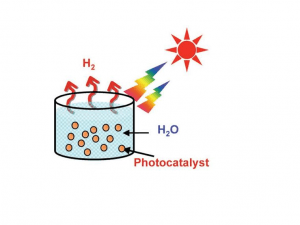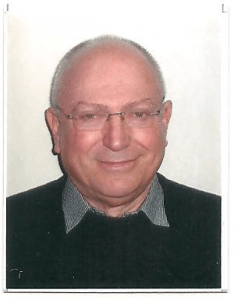Huge Impact for Energy Study
No. 1 2015 paper on solar fuels: A study by Technion Professor Yeshayahu Lifshitz
A paper by Technion Professor Yeshayahu Lifshitz and his Chinese colleagues received significant international praise. It was rated the top solar fuels paper of 2015 by the Solar Fuels Institute (SOFI) based on the number of citations it gained in scientific journals and on its usage (internet downloads). The study honored its authors with a prize from the Chinese Science and Technology Office as one of China’s top ten technological progresses of 2015. It is the most cited article (with about 195 citations in the Science Citation Index) out of all Israeli (about 20,000) and Chinese (about 300,000) articles printed in 2015.
The paper was published in the prestigious scientific journal Science on February 27, 2015 by Prof. Lifshitz and his colleagues including Profs. Zhenhui Kang and Shuit-Tong Lee from the Soochow University in Suzhou, Jiangsu, China. The article describes a breakthrough in the production of hydrogen through solar energy driven water splitting.
Hydrogen is considered a most promising future fuel source because of its potential use in powering motor vehicles and generating electricity without the involvement of unwelcomed by-products and greenhouse gas emissions. This is the reason for the worldwide effort to invest in the development of hydrogen producing technologies and usage. The U.S. alone invested billions of dollars in programs such as the Hydrogen Fuel Initiative, supporting research and development of hydrogen and fuel cell technologies capable of lowering America’s dependence on imported oil and reducing the environmental impacts of fossil fuel combustion.
According to Prof. Lifshitz, “Concentrated attempts over the past four decades to develop photocatalysts for splitting water into its constituent elements (hydrogen and oxygen) by solar light have failed for a number of reasons: (1) low solar to hydrogen energy conversion efficiency (2) poor catalytic stability, causing catalytic activity to end within a few hours of operation and (3) high cost of catalysts’ materials, which often contain rare and precious metals.”

No. 1 Solar Fuel Article for 2015:
“Metal-free efficient photocatalyst for stable visible water splitting via a two-electron pathway,” Science, 347(6225), 970, February 27, 2015
Prof. Lifshitz and his colleagues were able to overcome these problems by developing a cheap, metal free, Earth-abundant and environmentally friendly catalyst made of a carbon nanodot–carbon nitride (C3N4) nanocomposite. Their findings showed a 2000% higher performance efficiency (20 times larger) as compared with other stable catalysts previously reported, working with unchanged hydrogen output for more than 200 days. “The novel nanocomposite allows for the first time the development of a simple (photocatalytic) system for hydrogen production using solar energy. This is the reason why this report has received such worldwide interest,” explains Prof. Lifshitz.
Professor Emeritus Yeshayahu Lifshitz is a faculty member at Technion’s Faculty of Materials Engineering. He holds three physics degrees (a Bachelor’s from the Hebrew University of Jerusalem, Master’s from Tel Aviv University, and a PhD from the Weizmann Institute of Science). He served as a senior research associate at the Soreq Nuclear Research Center (SNRC), where he became the founding head of the space technology center. This is a national center of knowledge supporting the Israeli space industry in all aspects related to the compatibility of materials, electronic devices and systems to the space environments. Prof. Lifshitz is the originator of the “subplantation model” describing modern film deposition techniques, and explained for the first time the nucleation mechanism of diamond crystals in laboratory settings at low pressures. In 2004 he joined the Technion’s Faculty of Materials Engineering, and since 2014 he has also served as a Chair Professor at Soochow University in Suzhou, China, where this study was carried out.
Prof. Lifshitz is listed as one of the world’s top 100 researchers in material science in 2000-2010 by Thomson Reuters and the Times Higher Education.
No. 1 Solar Fuel Article for 2015:
“Metal-free efficient photocatalyst for stable visible water splitting via a two-electron pathway,” Science, 347(6225), 970, February 27, 2015



